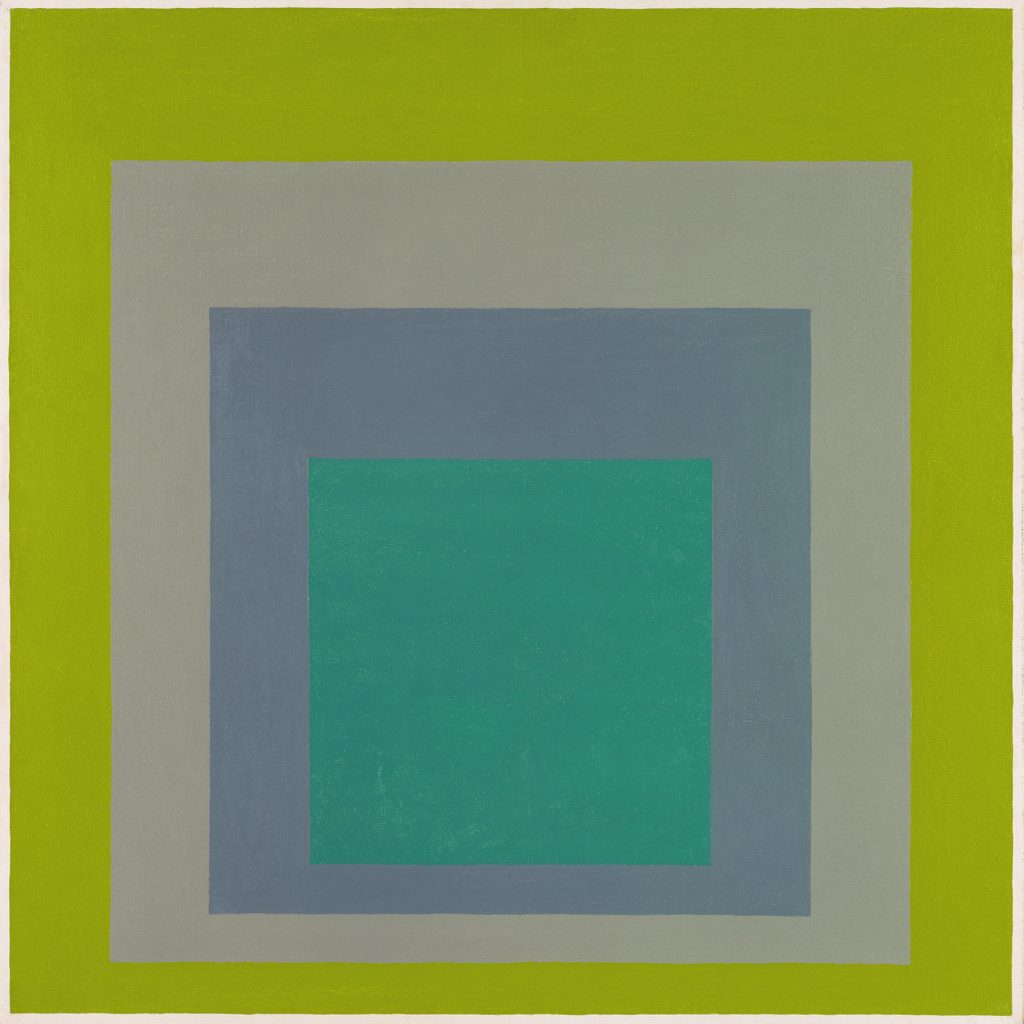Josef Albers (artist)
On the recommendation of Philip Johnson at New York’s Museum of Modern Art, organizers at Black Mountain...
view artistThis lesson will focus on cutting or tearing collage papers into fixed positions.

Study for Homage to the Square: "High Spring", by Josef Albers
Prep
Set Up
Introduction/ Warm-Up
Focus Activity Procedure
Closing
Written by Andrea Saenz Williams
Vocabulary
collage
layer
overlap
Materials
Different papers in interesting textures and colors, nontoxic glue sticks, 9 x 12” black construction paper (to mount final work)
Extension Activities for Teachers
Extension Activities for Families
Related Books
Brocket, Jane. Ruby, Violet, Lime: Looking for Color. Millbrook, 2012. [ISBN 978-0-7613-4612-8]
Ehlert, Lois. Color Farm. Lippincott, 1990. [ISBN 978-0-397-32441-5]
Ehlert, Lois. Color Zoo. HarperCollins, 1989. [ISBN 978-0-397-32259-6]
Hoban, Tana. Colors Everywhere. HarperCollins/Greenwillow, 1995. [ISBN 978-0-688-12762-6]
Hoban, Tana. Is It Red? Is It Yellow? Is It Blue?: An Adventure in Color. HarperCollins/Greenwillow, 1978. [ISBN 978-0-688-80171-7]
Hoban, Tana. Of Colors and Things. HarperCollins/Mulberry, 1996, 1989. [ISBN 978-1-41316-654-5]
Hoban, Tana. Shapes, Shapes Shapes. HarperCollins/Greenwillow, 1986. [ISBN 978-0-688-05832-6]
Houblon, Marie. A World of Colors: Seeing Colors in a New Way. National Geographic, 2009. [ISBN 978-1-42630-556-6]
Lionni, Leo. Let’s Make Rabbits: A Fable. Random/Dragonfly, 1982. [ISBN 978-0-679-84019-0]
Luxbacher, Irene. 1 2 3 I Can Collage! Kids Can Press, 2009. [ISBN 978-1-55453-313-8]
Micklethwait, Lucy. I Spy Shapes in Art. HarperCollins/Greenwillow, 2004. [ISBN 978-0-06-073193-9]
Royston, Angela. Color. Heinemann Library, 2008. [ISBN 978-1-43291-432-5]
Shahan, Sherry. Spicy Hot Colors=Colores Picantes. Illustrated by Paula Barragan. AugustHouse, 2007, 2004. [ISBN 978-0-329-68420-4]
Thomas, Isabel. Making Collage. Heinemann Library, 2005. [ISBN 978-1-40346-922-9]
Walsh, Ellen Stoll. Mouse Paint. Harcourt, 1989. [ISBN 978-0-15-256025-6]
Walsh, Ellen Stoll. Mouse Shapes. Harcourt, 2007. [ISBN 978-0-15-206091-6]
Links
On the recommendation of Philip Johnson at New York’s Museum of Modern Art, organizers at Black Mountain...
view artist